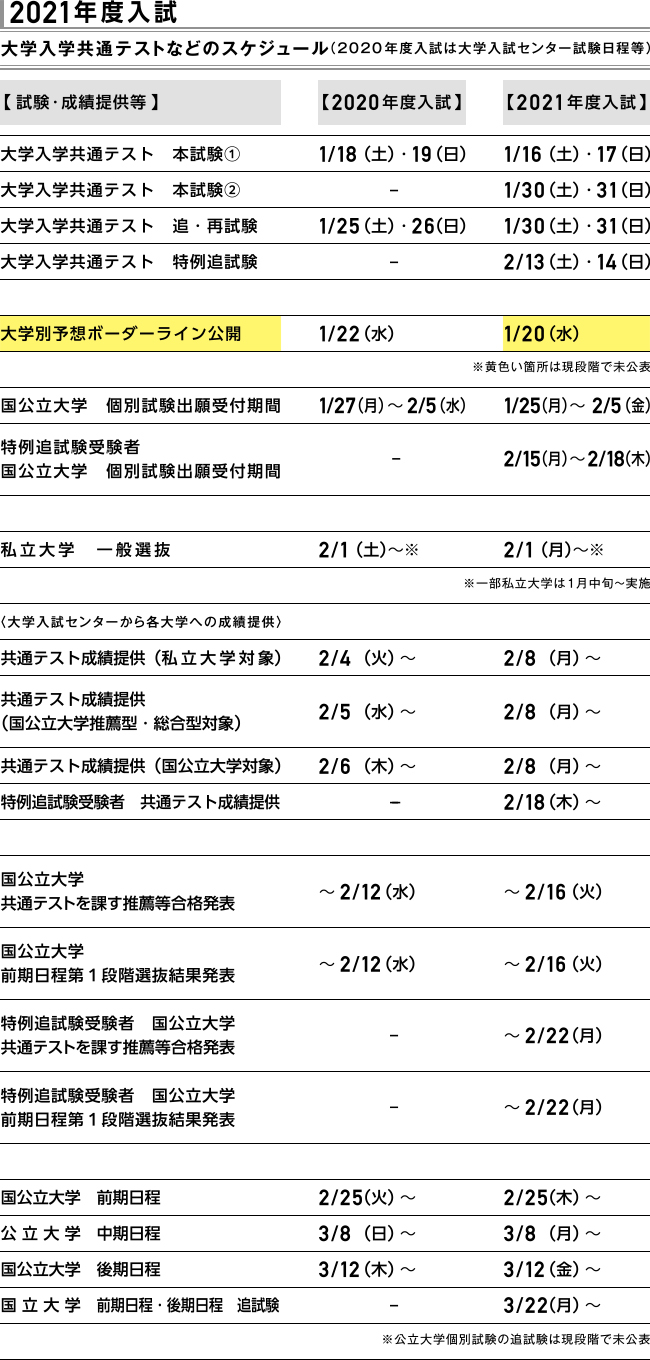On June 2020, 6, the Ministry of Education, Culture, Sports, Science and Technology announced the "Guidelines for University Admissions Selection" about two weeks later than usual.Since this implementation guideline is a notification, it is not legally binding, but the basic principles for conducting entrance examinations are shown and the university accepts the content of the notification as an obligation.The implementation guidelines indicate that the main test for the Common Test for University Admissions will be held twice, and that the active students will be scheduled to take the test three times, including the special supplementary test.In response to this, people who are said to be professionals in the examination are making various announcements about "Which schedule is the most advantageous to take the examination".What should students think about the common test schedule?
What admissions schedule information do you really need to make a decision?
In order to consider the examination schedule for the common test, we have organized a schedule comparison table with the entrance examination last year by combining the entrance examination schedule published in the "University Admissions Selection Implementation Guidelines" and the materials published by the Japan Association of National Universities.
As we all know, this year's common test will be held twice with a two-week interval.High school graduates (2) will only take the exam on January 1th (Sat) and 16th (Sun), but active students will use the questions for additional / re-examination (17) January 1th (Sat), 1 Day (Sun) You can also select "Second Schedule".There is a theory that the supplementary / re-examination is more difficult, but the National Center for University Entrance Examinations explains that the difficulty level of the supplementary / re-examination is the same every year.It is well known among those involved in the entrance examination that in order to actually verify the difficulty of the questions in the main exam and the supplementary exam, the student monitors of the National University of Difficulty take both exams and verify the difficulty of the questions. It is a fact that was done.However, from the viewpoint of test theory, there is a view that even if the average score is the same, it is not always homogeneous if the variance is different, so it cannot be said that they are exactly the same.
People who are said to be professionals in the exam comment on which schedule is more advantageous to take the exam.Looking at them, there are many opinions that recommend the first schedule.However, there are some opinions that recommend the second schedule, and the main reason is that it is easier to get points if you prepare for two weeks after identifying the tendency of the common test for university admission to be held for the first time.Certainly, it can be said that mathematics for liberal arts students, science, and geography public citizens (or national language for some students) are right for science students.
Therefore, the second schedule seems to be more advantageous for students who are aiming for a local national university with a high score for the common test and a small number of individual test subjects.However, for students who are aiming for a difficult national university, even if they take the common test on the second schedule and get a high score, it would be a disadvantage if the individual test preparation is delayed by two weeks.As you can see, there are advantages and disadvantages to choosing either schedule, but in order to make a decision, it is necessary to carefully consider the application period of national and public universities and the self-scoring schedule of common tests by private businesses.

